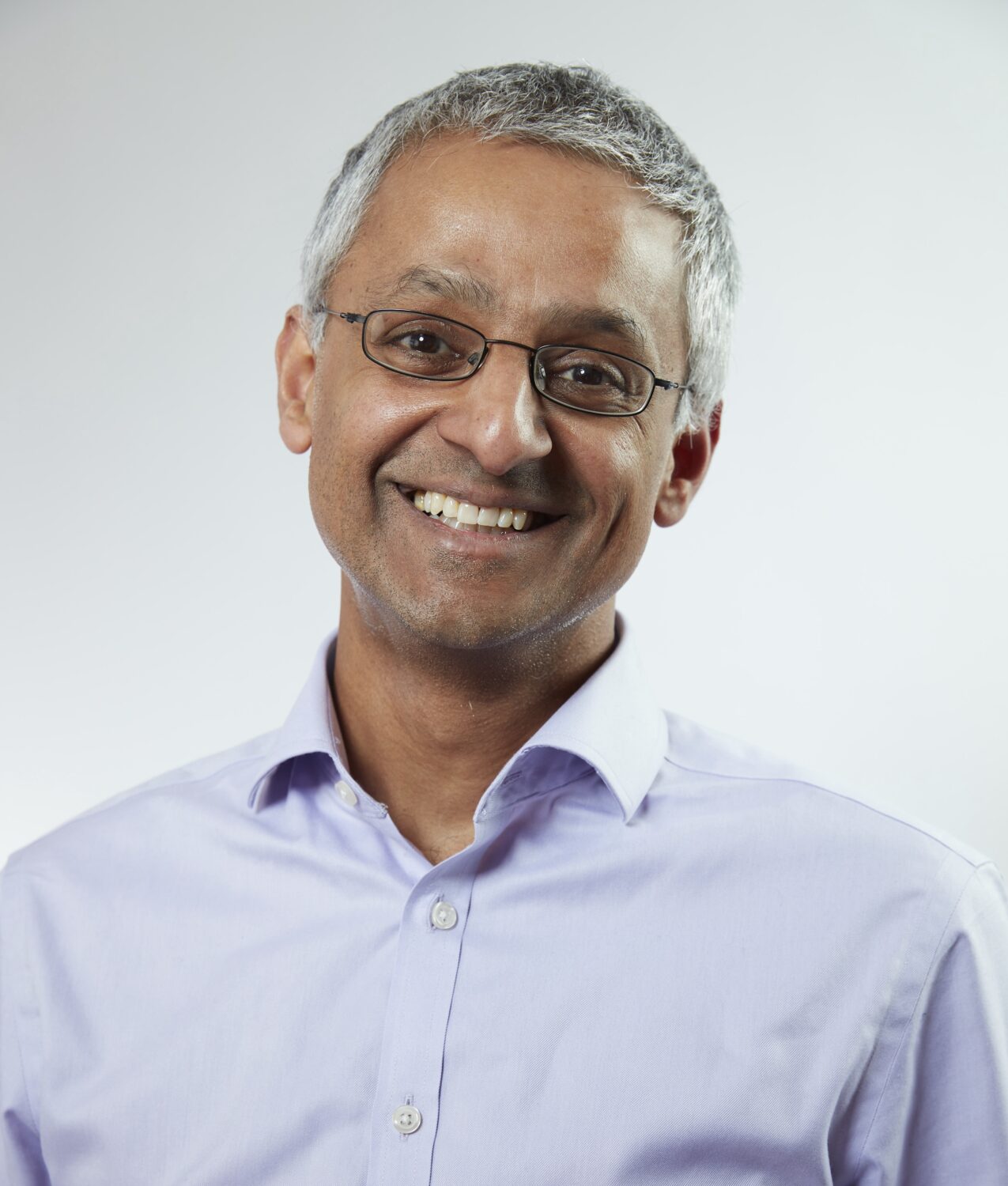Sir Shankar Balasubramanian is a Professor of Chemistry in the Yusuf Hamied Department of Chemistry at the University of Cambridge, UK, and Senior Group Leader at the Cancer Research UK Cambridge Institute. He will be giving the Mendel Lecture on Tuesday June 13 at 13.30hrs.
There are not many world-leading researchers who are prepared to say that they went into science because they weren’t good enough at football, but Shankar Balasubramanian admits it freely. “I grew up just outside Liverpool in a place called Runcorn and, as a kid, when I wasn’t in the house, I’d be outside kicking a football. I grew up on that, and later was captain of my school team. Where I grew up if you played football, it was natural to dream of playing for Liverpool (in my case), and it wasn’t until I was about 17 that I gave up on that dream.”
He doesn’t regret having become a scientist instead, though. “I don’t consider what I do to be work. Like most scientists I do it because I’m driven by curiosity and the desire to explore.” His curiosity started at an early age. “I can trace it back to primary school, or even earlier. I always wanted to understand how things work – whether it’s machinery, devices, or the world around them. And as I learned more and more detail about the natural sciences it built an even greater intrigue around wanting to understand in considerable detail how the world works. Having inspirational teachers also played an important role in stirring my desire to be curious and to learn. As I look back, I can also see how vital it was to have parents who were supportive, while giving me the space and time to find my own path.”
At school he first leaned towards mathematics, and then towards chemistry, but his chemistry teacher in his A-level years tried to persuade him to do medicine after school. “I ended up coming to Cambridge to do a degree in Natural Sciences, which spans everything. Whilst I was leaning towards chemistry, I always had a broad interest across the natural sciences – physics, chemistry, and aspects of biology and medicine. So that probably explains why I have ended up as a researcher straddling disciplines.”
Pursuing curiosity is personally fulfilling, but it isn’t always clear whether what you’re doing can actually make a difference to the world. “This involves luck and timing. Fundamental research can take 100 years or longer before it makes a difference in the world, so to see a practical implementation of your work in your own lifetime is hugely fulfilling. About 25 years ago, David Klenerman and I were doing some blue-sky research on how machines that replicate DNA work, by using new observation techniques. That led us to see a different way to sequence DNA as an unintended consequence of what we were doing. It set us on a pathway to develop the idea into a commercial system via a startup company, which we called Solexa. Our company and technology was later acquired by Illumina and led to the world’s dominant method of sequencing genomes. The technology and the data it has generated are being used in research and also for clinical decision making. Routine human genome sequencing at scale has already had a substantial impact in cancer, rare diseases, and infectious diseases. The full impact will probably need another decade or two to be fully realised. I am fortunate to have had the opportunity to contribute to something that is having an impact on so many people and to see it happen during my lifetime.”
Another major source of satisfaction is the teaching and mentoring of young people. “It’s made me very happy and proud to see young people who I have mentored in my lab, or who I’ve taught as an undergraduate, go on to become successful in whatever they’ve done. Many have become hugely successful in the world of academic science or the biotech industry; several have won international prizes, and many have made major contributions to society.”
Scientific research is by its nature unpredictable, he says, and short-term thinking in research can be unhelpful. “You should carefully choose a question that you think is, or could become, important and interesting, then stick at it and dig deep to ask good, probing questions. Over time, you will likely see or discover things that will add to our understanding and may make a significant difference in the long-term. It is essential that funders of scientific research take a longer-term view on evaluating progress and outcomes. Typically, it takes many years to go from an idea to building significant knowledge and understanding. The opportunity for transformative innovation is often unanticipated and can be lost by short-term research culture. I’d like to see research support that extends to ten-year horizons for certain types of projects, especially for younger researchers.”
He often tells PhD students and researchers that many of the things they will try in the lab will “fail”. But they won’t actually be failures – that’s just a perception. “Failure is often the best way to learn.”
He still has the research proposal for his work with David Klenerman that led to the development of Solexa-Illumina Next Generation Sequencing. “From the proposal you could not see where this would all end up, yet it led to a method that been commercialised and is making a difference in the world. This happens in science more often than people realise, and I think we need to structure science in such a way to enable such opportunities to happen. New concepts emerge from basic research. So for applied research and commercialisation to be successful, funding agencies must support and maintain a very strong foundation of basic research.”
Retirement is not on the cards, at least not just yet. “I don’t think I’ll ever stop being a scientist, at least not in terms of thinking about science. But there are some things I haven’t done enough of, and maybe in future I will make more time to pursue them. I enjoy endurance running, but you need a lot of time to do that. I also want to spend time more widely exploring the world and its natural beauty. I took up wine tasting and wine collecting a few years ago. There’s no greater pleasure than having a nice bottle with friends and chatting. Every bottle of wine has a story …”
He will be telling the conference about his journey between chemistry and genetics. “I’ve spent much of my 30-year career working on aspects of DNA, probing its structure and function. I’ll talk about some of my adventures in the field; the primary sequence of DNA, which is genetics, and some aspects of the natural chemistry of DNA that fall under the umbrella of epigenetics. My lab has spent more than 20 years probing a four-stranded DNA structure – a quadruple helix. So, the third area I’ll talk about will be about DNA structures other than the double helix. Each adventure started with chemistry and progressed towards biology and medicine.”



